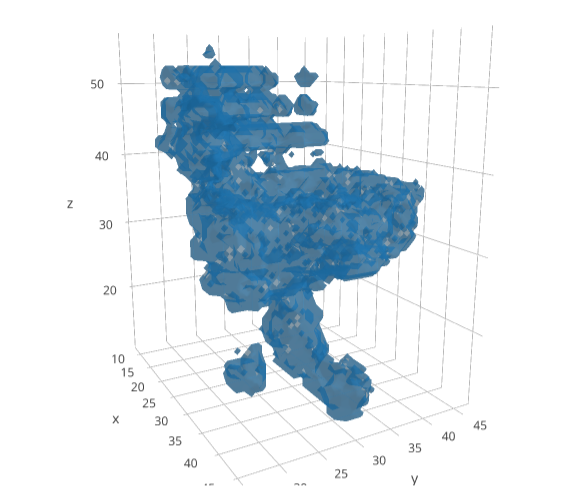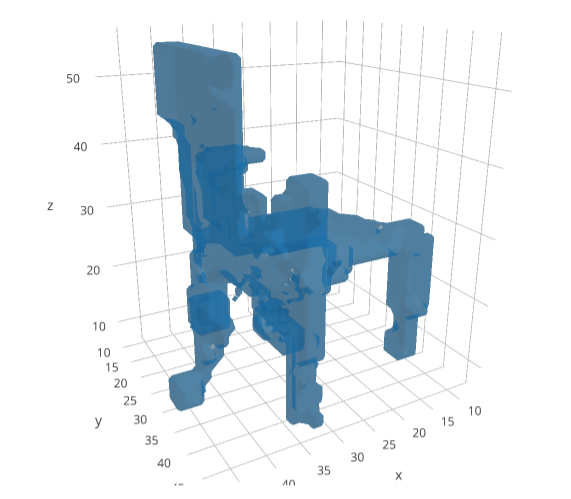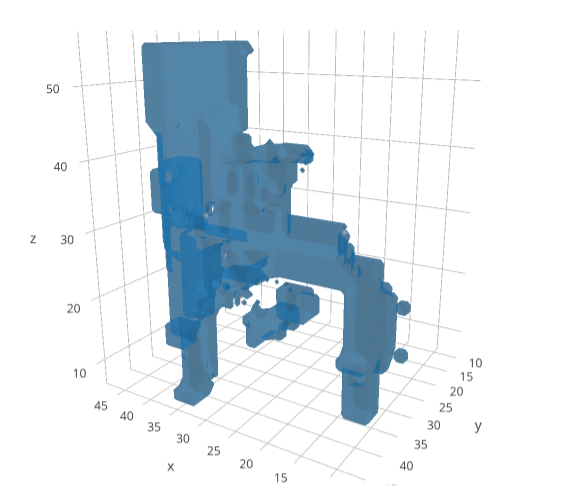3D GAN - 3D Generative Adversarial Networks for Volume Generation and Classification
3D-Generative Adversial Network
The problem of near-perfect image generation was smashed by the DCGAN in 2015 and taking inspiration from the same MIT CSAIL came up with [3D-GAN][3dgan] (published at NIPS’16) which generated near perfect voxel mappings. The abstract of the paper titled “Learning a Probabilistic Latent Space of Object Shapes via 3D Generative-Adversarial Modeling” is as follows:
We study the problem of 3D object generation. We propose a novel framework, namely 3D Generative Adversarial Network (3D-GAN), which generates 3D objects from a probabilistic space by leveraging recent advances in volumetric convolutional networks and generative adversarial nets. The benefits of our model are three-fold: first, the use of an adversarial criterion, instead of traditional heuristic criteria, enables the generator to capture object structure implicitly and to synthesize high-quality 3D objects; second, the generator establishes a mapping from a low-dimensional probabilistic space to the space of 3D objects, so that we can sample objects without a reference image or CAD models, and explore the 3D object manifold; third, the adversarial discriminator provides a powerful 3D shape descriptor which, learned without supervision, has wide applications in 3D object recognition. Experiments demonstrate that our method generates high-quality 3D objects, and our unsupervisedly learned features achieve impressive performance on 3D object recognition, comparable with those of supervised learning methods.
All code related to this blog post can be found at : meetps/tf-3dgan

Architecture
The architecture of 3D-GAN is very intuitive with the generator consisting of deconvolutions that upsample high-channeled input feature map to lower channeled output feature map and discriminator just mirrors the generator but consists of strided convolutions. One point to note is that there is not a single fully connected layer in the network, nor at the generator-start nor at discriminator ending. It’s fully convolutional in it’s true sense.

Data
The data (available only in cube_length=32) can be found on the Princeton’s ShapeNet Website
Download and extract the data and change the path appropriately in dataIO.py The 3D-GAN takes a volume with cube_length=64, so I’ve included the upsampling method in the dataIO.py.
Training
Training the 3D-GAN is a non-trivial task, especially if you don’t know the exact hyperparameters and tricks. I used tricks from Soumith’s ganhacks repo. I faced a lot of problems during the training, the hyperparameters you see in the code are finetuned for best results, change them at your own peril.
Here’s a bunch of things [with observations] I tried until I got to unleash the beast:
- Changed the loss of generator to be
max(log(D_z))instead ofmin(log(1-Dz))as former has vanishing gradients [better numerical convergence of loss] - Used sampling from Gaussian (0,0.33) instead of uniform sampling [Faster convergence and better object generation]
- Increased the learning rate of discriminator to 10e-3 [ Generator is unable to cope up and discriminator accuracy reaches near 100% ]
- Autoencoder: Pretraining [Autoencoder converges to trivial solution ( i.e is all voxels have values near 0.5) with boxlike artifacts ]
- Autoencoder: Adding l2 loss of weights to autoencoder [ No Change ]
- Autoencoder: Attempted changing the optimizer from Adam to RMSProp [ No change ]
- Autoencoder: Clipped the values below 0.5 to zero and above 0.5 to 1 forcing the network to stop reaching trivial solution [ Some non-zero voxels are now visible near desired locations, but there is little or no similarity in structure to a chair ]
Training the 3dgan_mit_biasfree.py for about 20000 batches and you’ll be good to go.
Variants
As mentioned above I tried several things and variants of the 3D-GAN, I’ve made separate files for each of them, briefly summarized as:
| File | Description |
|---|---|
| 3dgan_mit_biasfree.py | 3dgan as mentioned in the paper, with same hyperparams. |
| 3dgan.py | baseline 3dgan with fully connected layer at end of discriminator. |
| 3dgan_mit.py | 3dgan as mentioned in the paper with bias in convolutional layers. |
| 3dgan_autoencoder.py | 3dgan with support for autoencoder based pre-training. |
| 3dgan_feature_matching.py | 3dgan with additional loss of feature mathcing of last layers. |
| dataIO.py | data input output and plotting utilities. |
| utils.py | tensorflow utils like leaky_relu and batch_norm layer. |
Generation and Visualization
It’s important to visualize the results as the network trains, I used visdom (fantastic work by FAIR). I personally prefer visdom over tensorboard as it’s very easy to use with a sleek interface unlike the complex tensoroard. Visdom also supports visualizing 3D Volumes with plotly ! Here is a chair plot generated by the trained GAN, visualized in visdom powered by plotly (Needs WebGL).
Figure : A 3D interactive plot of a chair generated by the trained GAN model.
A few other chairs generated are:
 |
 |
 |
 |
 |